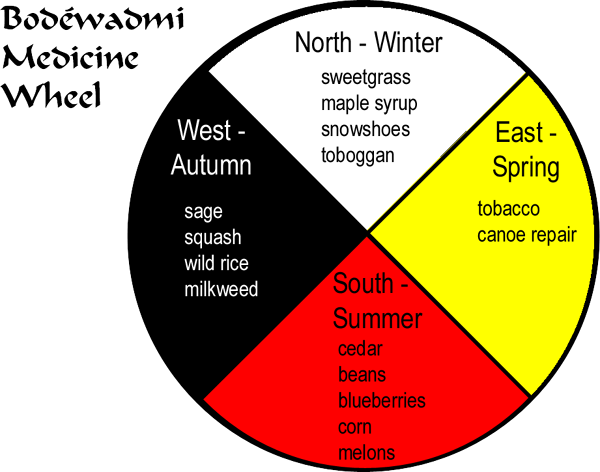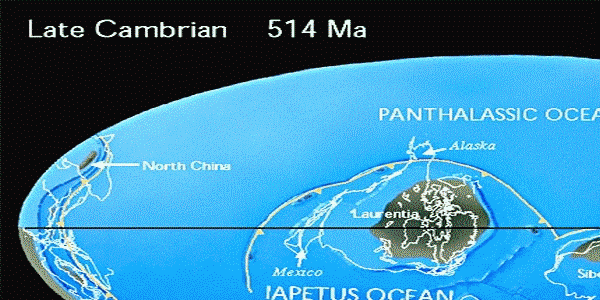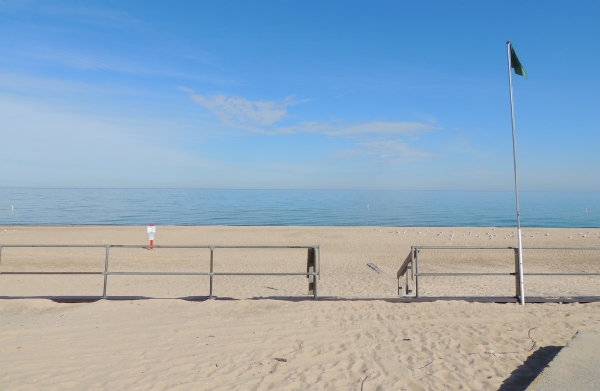 2,000 Gallons of Oil Leak Into Lake Michigan
Plus microfibers, mercury, phosphorus, &
more!
2,000 Gallons of Oil Leak Into Lake Michigan
Plus microfibers, mercury, phosphorus, &
more!
January 14, 2015
The
Donald
C. Cook Nuclear Plant near Bridgman, Michigan
reported
an
estimated
2,000
gallon oil leak
into Lake Michigan on December 20, 2014. The Homer Simpsons of the
nuclear power plant say the two month long cooling system oil leak is
not radioactive. The oil leaking power plant is located just north of
the 1,439 acre Warren Dunes State Park, Michigan's most-visited park.
Lake Michigan also has
microfiber
pollution. Microfibers are tiny synthetic fibers
that wash and rub
off of clothes
and boat sails and end up floating in the lake. In 2013, 12% of the
lake debris was microfibers, after researchers dragged fine nets
through the waters of southern Lake Michigan. The fibers get caught up
in the guts of fish and bi
rds and are
too small for
many water filtration systems. Microfibers have been found in beer.
(Homer Simpson panics.)
Lake Michigan also has
mercury pollution
from the BP refinery in
Indiana. BP has been
dumping
20 times the mercury they are allowed to dump in Lake
Michigan.
Metformin,
a type 2 diabetes drug, and other prescription drugs are being found in
Lake Michigan.
Last September, the mayors of the Great Lakes cities met in
Chicago to
discuss the
phosphorus
problem on the Great Lakes, the world's largest
source of "fresh" water (other than the ice caps). Lake Michigan is the
source of Chicago's drinking water. It was a phosphorus algae bloom
that caused Toledo to stop drinking Lake Erie water on August 2, 2014.
When my hand touches Lake Michigan water, bumps form around
my pores --
keratosis pilaris. It goes away by washing my hand with clean water.
Music
Association: Doobie Brothers - Black Water
Happy New Year
January 1, 2015
Green
glass bottles lay about, empty of bubbly -- all that's left are the
bubbles. The corks and foil turtlenecks lay where they landed along
with glasses half empty and half full. The Tv smugly blares:
“This
appears
to be the coldest Tournament of Roses Parade on record. What you are
seeing was
a chrysanthemum petal float and is now just a wilted mess, leaving an
icy smear on the road. The rose petals on the next float are all brown
and withered and ucky. They were beautiful when they were inside. Maybe
we should have the next parade inside, don't you agree?”
“My
script says, 'I agree.' The next float... isn't that a shame? They
tried using hairspray... tons and tons of hairspray to keep the flowers
(let's say) fresh, but apparently hairspray doesn't spray in the cold.
If we wanted floats looking this way, we could've had the parade in
Minnesota.”
Music
Association: Bob Seger - We've Got Tonight
TV
review
Christmas Special
December 24, 2014
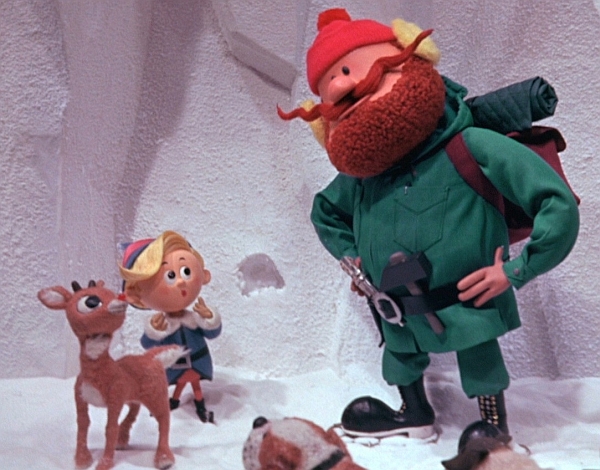
Have
you ever bitten down on a candy cane and found that a piece of
peppermint has disappeared because it plastered itself to the surface
of your tooth?
I could write a Christmas special about that.
Fifty years ago this month,
Rudolph the
Red-Nosed
Reindeer
first aired on television. It was written by Romeo Muller (adapting
Robert May's story and the Johnny Marks song) but if you think about
the plot, you'd swear it was written by a committee.
First
there's the reindeer with the nasal deformity, then there's the elf who
wants to be a dentist who teams up with a guy with a big pick-axe
looking for silver and gold. In a never-viewed scene he strikes
peppermint.
The Christmas special is nearly a PSA for dental care in the
face of
cookies and candy canes.
Hermey,
almost Hermes the PSA messenger god, wants to be a dentist. Yukon
Cornelius, the Canadian with a pick that he licks, is prospecting
for silver for fillings and gold for crowns. Or just silver and gold,
the dental message was lost in earlier drafts.
What was the original story for the TV special of
Rudolph the Red-Nosed Reindeer?
Rudolph became part of Santa's team, but what about Hermey?
Did Hermey
originally go sleigh-riding with Santa?
Burl Ives:
And
while Santa filled the stockings on Christmas Eve, Hermey filled the
cavities, taking a big pick-axe to embedded peppermint candy
cane.
Music
Association: Johnny Marks - There's Always Tomorrow
Rudolph the Red-Nosed Reindeer © 1164 (yes
1164, another decision by committee)
movie review
Hunger Games 3 - Mockingjay
part 1
November 25, 2014

I
am a reasonable person.
In the first two Hunger Games movies, Katniss
Everdeen (Jennifer Lawrence) was the reasonable person. The final
screen moment of the second movie (Catching Fire) was a closeup of her
face transformed by emotional succession, a rapid evolution of
feelings. That moment was one of the best in Catching Fire.
In
the third movie, just released this past weekend, Katniss is no longer
the voice of reason. Haymitch (Woody Harrelson) is the new voice of
reason.
Katniss is suddenly lovesick for Peta. She now believes the
lie
she helped propagate in the previous two movies that she loves Peta.
That's the basis of Hunger Games - Mockingjay part 1. Peta is being
held by the capitol, and Katniss -- strong, tough Katniss --
can
hardly survive or think straight without him.
This is the first
Hunger Games movie without the hunger games, which is fine, but it's
also the first one that has Katniss believing the love game was real.
Mockingjay is two hours of lovesick unreasonableness.

Music
Association: Headeast - Since You've Been Gone

 No Honor in Racism
No Honor in Racism
November 2, 2014
The protest against the NFL's Washington Redskins had a great
turnout
and a great day at the University of Minnesota.
The name will change. It's just a matter of time.
Happy
Halloween
October 31, 2014
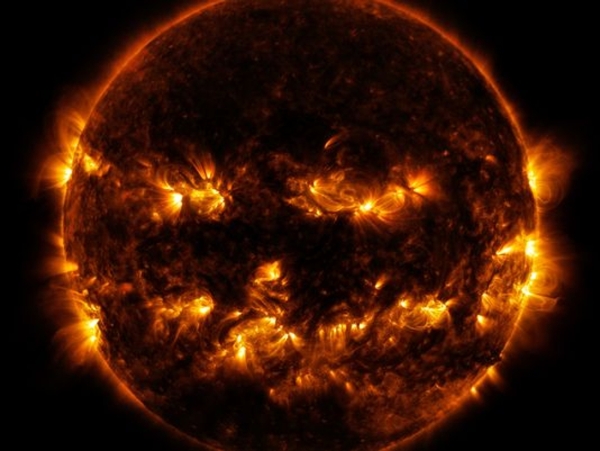 Native
History
Native
History
October 30, 2014
For
years
Hopes
and Dreams has freely provided a set of
timelines
of United
States history that I made.
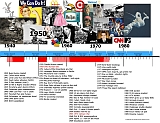
I should update them
and expand on them, possibly by creating a timeline of world history.
But has studying history become...
history?
Older
scientists and doctors have complained to me of the rising expectations
of keeping current with research and changes in their fields. Access to
information has become easier, yet experts are expected to
read
everything that comes along, while it's still hot. The studying not
only never ends; it increases. So why study something as accessible as
history?
I'm not certain we should. Civics?
Absolutely. History? (Shrug.)
Part
of the problem
I've had in expanding my historical timelines is a matter of values.
Values
Is
history about kings? Is it about who left the biggest scar on Earth? Is
it about conquerors? Are those our values?
Or is it
about cultural understandings, understanding how most people of a time
and place lived, sometimes with nature, and leaving without much of a
trace.
Think
about how environmentally friendly the Native American cultures were,
despite being as diverse as their landscape. Native Americans certainly
qualify, especially the tribes north of Mexico. My second prior post
“
The Oldest Of
The New World”
shows the lack of traces of thousands of years of life prior to the
United States.
Michigan's
Native Americans
The
Old
Copper culture
(4000-1500 bce) was the earliest known Native Americans in what is
today Michigan. Their area surrounded Lake Superior, Lake Michigan, and
Lake Huron and included lower present day Ontario. In addition to
hunting, gathering, and fishing, they were miners, metalworkers, and
traders of copper items, mined from Isle Royale and the southern coast
of Lake Superior. The copper mining started with gathering float
nuggets in soil and streams then turned to the mining of
copper
sheets from rock fissures. The earliest copper work was chipping like
what was done to stone. Learning to take advantage of copper's
flexibility,
they turned to annealing techniques (alternating heating and hammering)
to craft beautiful tools and ornaments.
The
Hopewell
(200bce-700ce)
were one of the four main mound building groups of North America. The
Goodall Focus
was a Hopewell subgroup covering southwestern Michigan and northwestern
Indiana, including the Goodall mounds in Indiana and the Norton (or
Converse) mounds in Michigan. You may wonder, why not call it the
Norton focus? Most of the forty Norton mounds were destroyed. They were
either leveled in 1874 as part of a development by James Converse,
trenched through with a water line in 1885, or destroyed by
Interstate 196 (later the Gerald R. Ford freeway) in Grand Rapids in
1963. Some of the gutted burial mounds contained earthenware pots and
pottery fragments, copper needles, deer bone needles, graystone pipes,
pipestone pipes (using catlinite from Pipestone Creek, MI), beetle
totems made from antler, and bear canines (
illustrations).
Sacred. Burial sites. Would the same people pillage
cemeteries and
churches? It boggles the mind.
Native American burial mounds have been found in: Alabama,
Arkansas,
Florida, Georgia, Illinois,
Indiana, Iowa, Kansas, Kentucky, Louisiana, Michigan,
Minnesota,
Mississippi, Missouri, New York, North Carolina, Ohio, Pennsylvania,
South Carolina, Tennessee, Virginia, West Virginia,
Wisconsin, and
Ontario. In Minnesota, Native American mounds are in Indian
Mounds Park in St. Paul. In and around Lake Minnetonka there
were
524
mounds at 48 sites. Today 40 mounds remain at 12 sites. Native American
mounds are also found in Bloomington, Eden Prairie, Ottertail, Red
Wing, and probably other spots. The largest Native American mound is at
Cahokia in Illinois.
The
Late
Woodland Period
(500-1000ce) found hunting with bows and arrows, taking over for spears.
Forest
signposts were trees -- big trees with a branch unnaturally
outstretched, pointing the way. Forest dwelling Native Americans would
pick a spot along a trail, where the trail wasn't easy to follow,
and plant a sapling of a large tree with a main branch pointed
toward the nearest destination. They would loosely wrap the tree branch
to cause
it to grow parallel to the ground. The wrap would be only a few feet
wide,
maybe a piece of deerskin, that would last a few years.
After a
few
years, a scar-free tree would act as a trail marker for
generations.
The
Mascouten
lived in
southwestern Michigan (lower peninsula) and were part of the
Algonquian
languages, which are northeastern tribes but not part of the Iroquoian
language family. The Mascouten were attacked with French-traded metal
blades and matchlock guns by the Bodéwadmi
(Potawatomi) in the 1630s and the Iroquois in the 1640s. The survivors
of the Mascouten were either captured by tribes with European weapons
or fled to the Myaamia in Indiana and the Kickapoo in Wisconsin.
The
Council of
Three Fires was
either formed at
Michilimackinac
in
796ce
or they migrated from the northeast
sometime after 1400,
when the North American continent became colder. By
oral
tradition,
the council had been a tribe traveling the Atlantic coast, around the
gulf of the St. Lawrence River, before
settling on the Georgian Bay of Lake Huron. The Council of Three
Fires were the Ojibwe (Chippewa) the older brother - keeper of
faith, the Ottawa (Odawa) the middle brother - keeper of trade, and the
Bodéwadmi (Potawatomi) the younger brother - keeper of the
fire.
All
three tribes are language off-shoots of the Algonquian family of
languages.
The
Bodéwadmi
(Potawatomi) lived in wickiups, domed houses of arched sapling
poles and interwoven mat
coverings. Their hunters and warriors used bows and arrows and wooden
clubs. They fished using spears, bone fishhooks, and nets of swamp ash
and milkweed with stone sinkers. They tapped maple trees with
spouts and buckets. Sassafras was an insect repellent. They
traveled with birch bark canoes, dugout canoes, toboggans, snowshoes,
and beginning in 1755, on horses. Their trails crisscrossed Michigan
with
multiple trails converging on
Michilimackinac
and Detroit. The Potawatomi weave is named after them.
They were
famous for their embroidery and beadwork. They crafted
wampum
out of
white and purple shell beads, possibly adding Lake Michigan crinoids as
ready-made wampum beads.
They
were the keeper of the fire, the
hearth, and the
Michilimackinac
meeting place.
The Bodéwadmi
grew beans, peas, squash, melons, corn, wild rice, and tobacco. They
boiled fish on the eastern coast of Wisconsin before it was a Friday
night event in Door County, Wisconsin. They followed deer mouse prints
in the snow to storage stashes of nuts. They made soup from cattail
roots, soup from blueberries and wild rice, and soup from milkweed
flowers, wild garlic, and lichen. They made pudding from corn and from
squash. Maple syrup was a sweetener. Everything in its season, like the
Bodéwadmi medicine wheel.
Iroquois war parties chased the
Bodéwadmi and other Algonquian language tribes out of
Michigan
and into Wisconsin during
the Beaver Wars of the mid-1600s. The Bodéwadmi spread out
in
Wisconsin and into Illinois, and were back in the St.
Joseph area of southwest Michigan in 1695. During the War of
1812, the Bodéwadmi, siding with the
British, attacked
a column of soldiers and civilians escaping Fort Dearborn. A
Bodéwadmi-French woman, Archange Ouilmette, intervened on
behalf
of the Americans. As a result, Archange and Antoine Ouilmette were
given a reservation in 1829 where Lake Street meets Lake Michigan in
what is today, Wilmette, Illinois.
The
Treaty of Chicago in 1821 caused the St. Joseph band of
Bodéwadmi to surrender a
large tract of land in southwest Michigan (nearly all land south of the
Grand River) and northwest Indiana. In 1823, the US Supreme Court ruled
Native Americans could not own land, except as part of reservations. In
1838, the Bodéwadmi of the Wabash River Valley, Indiana were
forcibly removed to Kansas, which
killed 41 (mostly children) of the 859. During the following ten years,
600 more died.
Some
Bodéwadmi escaped to Canada or Wisconsin. Most intermarried.
Many returned to Michigan or moved further west. Chief Leopold of the
Pokagon band of Bodéwadmi negotiated to keep
his 280 people
in southwestern Michigan.
The oral history of the
Myaamia
(Miami), the
Downstream
People,
says they emerged at Saakiiweeyonki (South Bend, Indiana)
where
the St. Joseph River empties into Lake Michigan. From Saakiiweeyonki,
they spread out along the Waapaahšiki Siipiiwi (Wabash
River)
from Kiihkayonki (Ft. Wayne, Indiana) to Aciipihkahkionki
(Vincennes, Indiana). The Wea tribe's largest village was Ouiatenon on
the Waapaahšiki Siipiiwi.
The Myaamia spread to the
Maumee River in Indiana and Illinois. They settled north into Wisconsin
and Michigan, living along trade routes of rivers of the Lake Michigan
basin. They.were on the western shore of Lake
Michigan's Green Bay in
1658, Fort St. Joseph (Niles, Michigan) in 1673, and Fort Miami (St.
Joseph, Michigan) in 1679-1680.
Their language was also a off-shoot of the Algonquian
family of
languages of the northeast. They lived in wickiups surrounded by fields
of corn in summer months and migrated to the prairie in winter. They
were like the Bodéwadmi in many ways, except the
Miamiak
ate their prisoners. Chief Little Turtle ended cannibalism in the
late 1700s. On November 9, 1846, the United States divided the Myaamia
into the Indiana Miami (148 Myaamia were allowed to
stay) and the Western Miami.(taken to Oklahoma).
| Sounds and drinks
I wrote this while listening to a CD by Carlos Quinche
titled “Meditation -
Contemporary Native American Music”
from 2008. It's wonderful instrumental music. It's great music
for
contemplation, writing, and peace. Simultaneously, I was drinking tea
from the Native
American Tea Company.
They have six tea blends: Good Medicine (spearmint), Indian Love Tea
(ginger), Warrior's
Brew (cinnamon), Teepee Dreams (peppermint), Chief's Delight (berry),
and Victory Tea (punch). Plus they have a
black tea and a green tea. (Box 1266, Aberdeen SD 57402-1266;
phone
1-888-291-8517). For a better balance in life, I highly recommend the
ones I have tried: green tea, Good Medicine, Indian
Love Tea, Chief's Delight, and Teepee Dreams. |
I'm
not sure how to create any sort of depth, any sort of real values, in a
timeline. Maybe it would be best as a blog post about native history.
Music
Association: Carlos Quinche - Ancient Dreams
Drinking Association:
Native American
Tea Company - Teepee Dreams
Twin Cities Calendar
Association:
November 2, 2014
-
No
Honor In Racism Rally (
Washington NFL
name)
 History Schmystery
Sand
Dunes & Fossilized Cheerios
History Schmystery
Sand
Dunes & Fossilized Cheerios
October
25, 2014
Take a straw and use it to blow a little
pile of sand.
If
you blow straight down, the sand scatters. If you blow with water in
your mouth, the sand will get wet and won't move much. If you blow from
the side, you can cause an escalator effect -- the sand grains bounce
up the little sand pile and over the top. Now do that for thousands of
years.
Congratulations, you've created a sand dune.
Maybe...You'd
need more sand. Your wind was fine.
What
you learned was that the wind has to be consistent, from one direction
and one angle, no cross purposes, for the thousands of
years. And
dry. It has to be a dry wind. A wet wind isn't going to do any good.
Water shuts down the escalator. Cold shuts down the escalator. Cold
temperatures take the slightest bit of moisture on the surface of the
sand and freezes the sand together so the dune is frozen in time.
Walking on a frozen dune makes the same sound as crunching on tortilla
chips, except not as close to your ears.
Wind likes
to sort
stuff. You can see it at Warren Dunes State Park, Michigan's most
visited state park, on the southeastern shore of Lake Michigan. Look at
the sand on Tower Hill, the big, obvious dune by the beach. The grains
of sand are fine.
R.A. Bagnold identified sand as
any particle between .02 - 1.0 mm in diameter in
The Physics of Blown Sand and
Desert Dunes,
from 1941. The grains of sand must be light enough in relation to the
strength of the wind to be bounced or carried but heavy enough to be
dropped off or stopped. Soil particles would keep moving. The squeak of
the sand comes from the high quartz content.
Run
down to the beach
and the sand grains are larger, darker, and heavier. At the water line
you'll find sand that is borderline pebbles, actual
pebbles, and
fossilized Cheerios.
Cheerios were first created in
1941 by
General Mills. Cheerios haven't been around long enough to get
fossilized, and these aren't really fossilized
Cheerios. They
are crinoids, little white ringlets of plantlike marine
animals that
were the dominant life forms of the Silurian period (380-350 million
years ago). They are still around today, but these crinoid fossils are
most likely from the Silurian. Crinoids are too heavy to be carried by
the wind (usually).
For hundreds of millions of
years, much
of the North American continent was an inland sea, a mega Gulf
of
Mexico (630-306 million years ago). Seacoasts and ocean coasts make
sand. The Great Lakes don't have the tidal forces to make sand to the
degree an inland sea would.
How Sand Dunes
Are Formed
The
recipe for forming sand dunes is:
•
medium-fine sand
• a strong
single direction (One Direction) wind
•
obstacles that stop the sand, like beach grass or a hill of
sand.
Most of the sand bounces up the sand hill. Some sand gets carried by
the wind.
Dry and warm helps.
Cooking
time varies by
location and conditions. Some dunes like Tower Hill at Warren Dunes are
in a funnel-shaped area that may have caused two or more dunes to
converge as one.
Historians say that Lake Michigan
used to
be larger on nearly all sides (except around Warren Dunes), and they
call
it Lake Chicago. Historians are funny. If they were in Minnesota, they
would have a blast continuously renaming all the lakes as the water
levels rise and
fall.

Some say the
dunes were formed when glaciers dumped an accumulation of sand in one
spot. Funny people.
There
was a time, 9,500 years ago, when Lake Michigan or glacial Lake Chicago
or whatever was half drained. At that time there would have
been a
sand bowl sitting just to the west of where Warren Dunes is today. The
sand was formed by the same seas where the crinoids lived. Lake
Whatever washed it together and then dried up. That's when the winds
took over. They've been working at it ever since.
Remember
the
description of sand dunes being like escalators? The back edges of
dunes are often like cliffs where the sand drops off. In the 1980s, the
Warren Dunes staff built a picnic area behind the Tower Hill dune. At
the same time, the escalator speed escalated when park rangers began
driving over Tower Hill on ATVs.
Steep
slopes became less steep, and beach grasses became uprooted. And only a
few years later, the dune swallowed up the picnic ground.
Music
Association: Dido - Sand
In My Shoes
History
Schmystery
The
Oldest of the New World
October
24, 2014
It's
quantification time: time to put numbers to the statement, North
America is “a young continent and an old continent.”
| 1,300
years
ago (700 ce) | oldest city -
north of Mexico | Cahokia, near
Collinsville, IL |
| 2,100 years
ago (100 ce) | oldest temple |
Pyramid
of the
Sun, Teotihuacan, Mexico |
| 2,600 - 2,800
years ago | oldest
building | Cuicuilco,
Mexico |
| 10,500 or
14,800 years ago | oldest art -
petroglyphs | Winnemucca
Lake basin, NV |
| 10,550 years
ago | oldest
footprints | Cuatrocienegas
Basin, northeast Mexico |
| 13,000 years
ago | oldest
human bones | Santa Rosa
Island, Channel Islands, CA |
| 13,000
- 15,000 years ago | oldest
tools | stone
scraper - near Walker, MN
stone tool kit - Buttermilk Creek, TX |
| 14,400
years
ago | oldest
shit - coprolites | Paisley Caves,
Oregon |
| 5-6 million
years ago | Grand
Canyon began | Colorado
Plateau uplift & Colorado River carves |
| 85
million
years ago | oldest
bonehead - dinosaur | Pachycephalosaur,
Alberta, Canada |
| 112 million
years ago | oldest
aquatic reptile | Nicholisia
borealis (plesiosaur), Alberta, Canada |
| 115 -
125
million years ago | oldest
flowering plant | Potomacapnos
apeleutheron, James River, Dutch Gap, VA |
| 2
billion
years ago | oldest
layer of the Grand Canyon | Vishno Schist,
Grand Canyon, AZ |
| 3.5 billion
years ago | oldest
rocks | Morton
Gneiss, Morton, MN (& gneiss in western Greenland) |
| 13.7
billion
years ago | oldest
stuff | hydrogen,
created 3 minutes after the big bang |
To
put all of this in a global perspective:
The India plate started
crashing
into Asia 40 million years ago.
The Amazon rainforest is 55
million years old.
Dinosaurs went extinct 66 million years ago.
The
oldest dinosaur fossil found is Nyasasaurus parringtoni in Tanzania
from 240-245 million years ago.
The oldest fossil (bacteria
“footprints”) is 3.49 billion years old, from
Pilbara, Australia.
Oldest cities are a
source of national and regional pride:
9000 bce - Jericho,
Palestine
(not continuously inhabited)
7000 bce - Catal Huyuk, Turkey
(not continuously inhabited)
6300 bce - Damascus, Syria
The
hydrogen in all of us is older than anything else around us. Hydrogen,
helium, lithium, and berylium were created 13.7 billion years ago,
three minutes after the big bang. Oxygen, carbon, iron, and lighter
than iron elements are star dust. Lead, silver, gold, and heavier than
iron elements are supernova dust.
All of this will
be on the test. Do your readings.
Music
Association: Bob Seger -
Old Time Rock and Roll
 Deforestation
Brazil
Says They Will Create A Rainforest Preserve The Size Of Delaware
Deforestation
Brazil
Says They Will Create A Rainforest Preserve The Size Of Delaware
My
Reaction: “Pick A Bigger State”
October
23, 2014
Brazil
announced on Tuesday they have created a rainforest preserve the size
of Delaware.
Having
driven across Delaware recently, twice, I understand the size of
Delaware. I say, “Pick a bigger state.”
Pick
Minnesota. Or Texas. Or Alaska.
Yes, it's good they
are heading in the direction of rainforest preserves. The
Alto
Maues rainforest preserve
has 6,680 square km (1.65 million acres) of mostly untouched forests.
The federal preserve makes logging and other development illegal.
I'm
concerned about the pace.
Deforestation
of the Amazon increased
in 2013. Destruction of the world's largest rainforest rose 29
percent in 2013 from the previous year, totaling 5,891 square km (3,360
square miles) or nearly the size of this preserve lost in one year.
A
fifth of the Amazon rainforest has been destroyed in the last three
decades.
Greenpeace
recently explained how they're
using
GPS trackers to expose illegal logging
in the Amazon. They spent two months near Santarém, the
center
of illegal logging in the Amazon. They attached GPS devices to logging
trucks and tracked the vehicles by satellite. Of the nine trackers
attached, two trackers recorded particularly revealing journeys, while
a small number appeared to have fallen off the trucks, and one was
switched by the trucker onto a different unrelated vehicle.
The
illegal logs, usually mahogany-like species such as jatobá,
ipé, garapa and maçaranduba, came from
state-owned parts
of the rainforest, where no logging permits have been issued.
Greenpeace also found evidence suggesting the logs delivered to the
sawmills were being laundered using permits from other areas.
Greenpeace
says, “There are laws banning the trade in illegal timber in
markets like the European Union and the United States.
Companies trading in timber
from the Amazon [need to]
take
responsibility for the wood
they’re buying, making sure it’s been harvested
legally and
sustainably, or they stop buying from high-risk regions like the
Amazon.”
Music
Association: Beach Boys -
Wouldn't It Be Nice
History
Schmystery
Pie
Plate Tectonics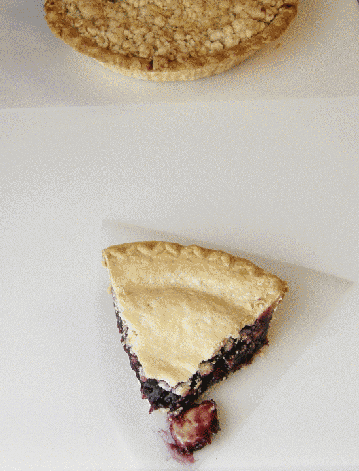
October 21, 2014
The
universe is expanding. Our galaxy is in the process of crashing into
its neighbor. Our star system is swinging on an outer leg of
our
galaxy. Our planet is orbiting the sun. Earth is spinning on its axis.
Our continents are moving apart on one side and crashing together on
the other. Erosion is smoothing the land, rock by rock. And you want to
go on a trip because you are sick of sitting still?!?
Hang
on, we're already traveling.
It's
easy to understand parts of plate tectonics -- how South America fit
into Africa, how India smashed into Asia, how Australia just sat there
for so long...
North American plate tectonics is
more weird. It's a young continent and an old continent.
The
old continental shield, the Canadian Craton, is centered under Hudson
Bay and stretches from Minnesota to Greenland. The oldest rocks of the
North American continent are the 3.5 billion year old Morton Gneiss*
rocks of
Minnesota and the nearly as good gneiss rocks from western Greenland.
Understanding
the young, hip part of the continent is the trick.
How
did North America come together?
Was
the younger part of North America underwater, waiting to emerge like a
glistening Aphrodite, to crown the amber fields and purple mountains?
Or
did the younger, lower part of North America (United States, Mexico)
migrate from somewhere else, join
up with the Canadian Craton, and zipper the seam with the Great
Lakes and the St. Lawrence Seaway?
Zip up.
The
key is the Great Lakes region. Take away the Duluths, Chicagos, and
Detroits. Take away the glacial ice sheets (like last winter). What
impressed the Great Lakes?
The Keweenawan Rift
System theory is that a trail of geologic hotspots from a billion years
ago impressed by inflating, bubbling up the Lake
Superior and Lake Huron** line only to later sink them down. The basalt
flows of
Gooseberry Park are a surface remnant of that time.
Not
completely surface.
Fourth
grade science. A surface volcano makes lava. Your underwater volcano
makes basalt. The lower North American continent spent hundreds of
millions of years being a ginormous Gulf of Mexico. Thick limestone
tells the story of coral seas... coral seas that dried up as the
continent was pushed up or stacked up like a pancake, while the Earth
shrunk.
I'm hungry for plate tectonic knowledge.
Don't
get me started about the Cheerios.
Music
Association:
Beyoncé - Rise Up
keywords - pie plate
tectonics, Morton Gneiss, Canadian Craton, Keweenawan Rift
System
* Morton Gneiss was a really ancient man in
the novel,
Hopes and
Dreams - Stuck on AutoDrive
** Lakes Superior and
Huron are technically the same lake. What do you
call two connected lakes with the same water level? The same lake.
Time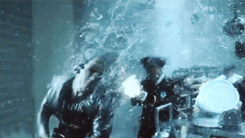
October 17, 2014
Do
you believe in time travel?
It's
an odd question. Time moves. We move with it. We move through time. Our
memories and histories are visions of the past. We plan for the future
with unwarranted certainty. Is that time travel?
Movie
Review -
“X-Men:
Days of Future Past”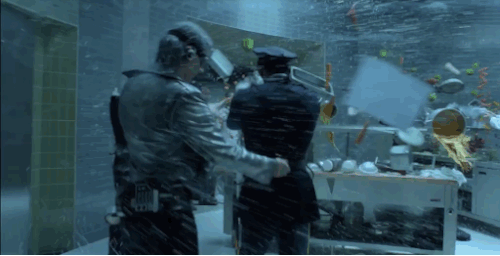
A while back I saw
the movie
X-Men: Days
of Future Past. It was a fluffy popcorn movie like
Guardians of the Galaxy,
which I also saw and never reviewed. The two reasons to see the X-Men
movie are Jennifer Lawrence and the Quicksilver scene. Quicksilver is
a Marvel comics hero who runs very fast -- faster than a speeding
bullet fast. The Quicksilver scene in X-Men has him running fast around
a room while everything else moves very slowly, with the song
Time In A Bottle by
Jim Croce. A newspaper flies up with the headline:
Truce Supervisors Belittled by
Trask. The scene was the high point of a fluffy movie.
TV
Review -
“The
Flash”
Two
weeks ago, another comic book speedster, the Flash from DC comics,
started a new network TV show. This is the second Flash series, which
borrows from a mix of the previous show and a mashup of concepts from
the
Smallville
series. The
pilot Flash show lacked the magical places of Marvel's Agents of
S.H.I.E.L.D. and featured two instances of time travel.

Running
fast is a form of time travel, in fiction and to a point in reality.
Think of all the Olympic sports that last mere minutes or seconds.
Diving. Gymnastics. Track. A surge of adrenaline and it's over. Blink
and it's gone.
Picture a hummingbird and a sloth.
Their movements can be tough to register for being too fast or too slow.
And
all of us, plus the hummingbirds and the sloths, are crazy fast
compared to geologic time.
Continental plates
crashing into each other... very... slowly.
Have
you ever imagined what it must have been like to be around when the
subcontinental India plate crashed into the Asian plate?
I
can
tell you what it was like, because it is still crashing today. The
Himalayas are being pushed up higher and higher.
India
is moving north at a rate of 67 millimeters per
year, tucking
under Tibet and pushing up the southern Himalayas by about 5
millimeters per year. It's a slowdown compared to the 15 centimeters
per year India had been sailing across the Indian Ocean.
What's
weirder is that part of the North American
plate is eastern Russia. Kamchatka and the Dalne Vostochnyy are part of
our plate that's being shoved into the Asian plate, just like India.
Music
Association: Jim Croce -
Time In A Bottle












